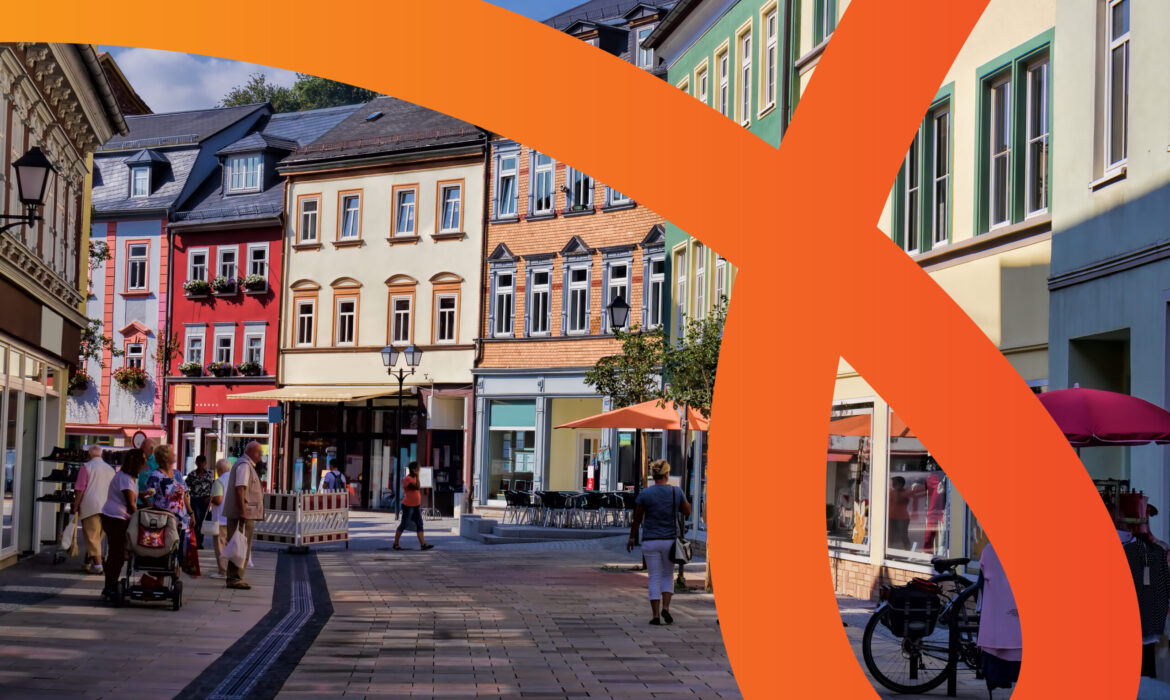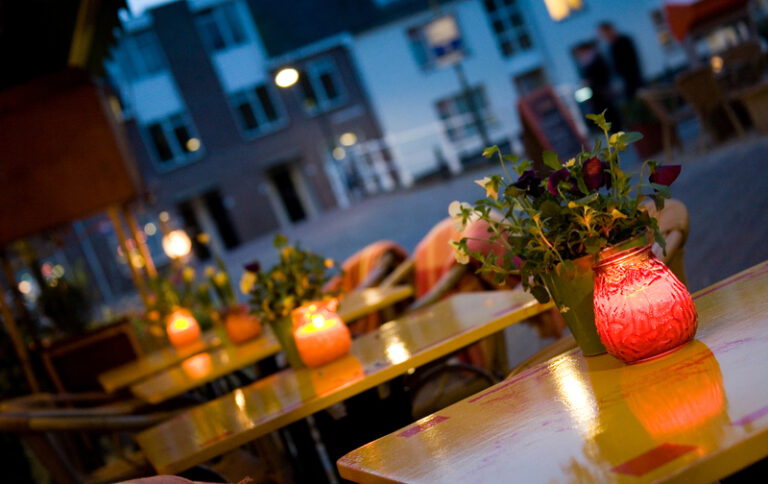
By Clare Bailey, The Retail Champion
The new planning blitz is a welcome breath of fresh air – shorter red tape, alfresco dining zones, the “agent of change” and even commercial lease auctions – all designed to plaster a smile on our streets. But pop the cork too soon and you’ll see planning reform is a sugar-coating, not the main course. By itself it won’t fix empty units, and its promises can’t repeal the laws of economics. As the Centre for Cities warned, a struggling high street is usually the outcome of a weak local economy – too many shops chasing too few wallets – rather than a simple zoning problem. In short: slashing planning rules to allow more cafés and bars is fine, but without customers who can afford to spend, and retailers who can survive, it’s just wishful thinking.
What the Planning Proposals Do (and Don’t) Solve
The July 2025 “red tape slashed” package covers lots of ground: fast-track alfresco permits, easier conversions of empty shops into pubs/cafés, noise-protection rules for beloved venues, and a simplified national licensing framework. These steps are sensible – we do need to banish absurd obstacles (a bakery should definitely be able to put tables outside without a year of forms). They promise to unleash a wave of pop-up street cafés and protect community pubs from silent litigants. Even the high street auctions sound good on paper: giving councils power to rent out year-long empties could, in theory, turn a vacant shop into a microbrewery or art gallery overnight.
However, it’s a mistake to think of planning as a magic wand. Critics on all sides note that footfall and retail turnover depend more on broad economics than on sidewalk cafés. As The Guardian bluntly puts it bluntly, policies on “shopfronts, rents or parking miss the bigger picture”. Tinkering with use-classes or licencing won’t help much if an anchor store — or the people who used to shop there — simply can’t pay higher costs. Helen Dickinson (CEO of British Retail Consortium) warns that even if Labour’s promised rate cuts arrive, many big stores could see bills rise, potentially harming the high street’s true footfall drivers. In practice, a disused Poundland turned café is neat, but if everyone in town is struggling to pay rent and bills, it won’t save local trade.

Root Causes: Costs, Rents, Skills and Spending Power
Behind the smokescreen of planning fixes lie some very real headaches. Rents on high streets are still sky-high in many towns, forcing shops to burn through cash just to stay open. At the same time, every basic cost is climbing. The National Living Wage has rocketed (the adult rate jumped over 20% in two years, and energy, insurance and regulatory costs are no joke either. Add next year’s National Insurance hike and business-rate changes, and the sector faces a whopping £2.3bn extra bill. Simply put, shops can only absorb so many extra costs before they close their doors.
Labour and Tory alike also tout business-rates reform, but even here the outlook is mixed. Many smaller shops already enjoy relief, and reform might just shift the burden onto bigger shops (the anchors that drive smaller stores’ footfall). Crucially, spending power has little to do with planning. As Centre for Cities argues, struggling towns with high vacancies suffer from too few people with decent wages, not just from narrow shopping policies. In poorer towns like Bradford or Newport, the study found, only £1 in every £10 is spent on leisure (dining, etc.) and 16% of shops sit empty. Contrast that with affluent centres (London, York) where dining-out is 25% of spend and vacancies barely 7–9%. In other words, if local incomes and footfall aren’t there, no amount of planning permission will fill shops.
Another factor: staffing and skills. Retail employment still represents about 8.5% of UK jobs, but retail job vacancies are 30% lower than before the pandemic. That means shops are struggling to recruit – either because the pay isn’t competitive or because people are moving on. A 2022 survey showed 99% of retail leaders worried about talent shortages (COVID and wages being big drivers). This translates into understaffed shops, reduced service levels, or higher wages chasing too few workers. Planning reforms won’t unclog this bottleneck.
And let’s not forget changing habits. By June 2025, online shopping was still growing fast – City A.M. reports a 4.5% year-on-year jump in online sales in June – while consumers grappled with inflation. Footfall data has been all over the place: a late Easter and record sunshine gave April 2025 a boost (high street footfall +5.3% YoY for that month), but comparing March-April 2025 to 2024 shows only a 0.2% gain. By summer 2025, high streets were still lagging: ONS found footfall in the week to 20 July down 2% on the same week last year. In short, shoppers remain cautious: warmer weather briefly drove food and drink sales, but non-food store visits are flat and consumers worry about budgets.
Bricks and Clicks: The New Retail Reality
If customers and costs are the battleground, then a weak digital strategy is another looming weakness for high street shops. The silver lining is that going online can actually help brick-and-mortar survive – but only if done wisely. Classic omniclient logic applies: shoppers want both worlds, and successful stores use online to complement their physical presence. For example, most Brits know they should have a Google Business Profile (GBP) and keep it updated – it’s proven to boost local searches. A well-maintained GBP (hours, photos, menus, inventory tags, etc.) is like a 24/7 digital signpost. Likewise, strong local SEO (listing your shop on local directories, optimising for “bakery near me” or “repair shop in [town]”) helps capture the footfall that does still happen on Google Maps and Search. Every smartphone user googling for “shoe repair [your town]” could become a customer – but only if you appear first.
E-commerce can also be a friend, not a foe. Take the Argos model: by marrying online and offline, they let customers order or reserve goods via website/app and pick them up in any Sainsbury’s or Argos store. That neatly turned clicks into bricks, flooding stores with foot traffic that otherwise might have gone elsewhere. Likewise, offering “click & collect” or in-store returns even if you sell third-party stuff online: shoppers love the convenience of buying at home or reserving and collecting in person. This cross-over is pure footfall gold. It’s not either/or anymore — bricks and clicks is the baseline. Your digital presence shouldn’t be an add-on, it should be doing the heavy lifting. Seamless integration between online and offline isn’t futuristic retail — it’s fundamental retail. If your website, Google listing and physical shop aren’t talking to each other, you’re leaking sales.
Your inventory feeds to your site, email lists, loyalty apps, online reservation tools, social commerce and more. Use online data to stock local shops smarter (if your website shows high demand for raincoats in a certain area, make sure the nearest store is stocked up), and use in-store interactions to enrich your online marketing (for instance, invite customers to leave reviews or collect email sign-ups at the till).
In practice, a small high street shoe shop might set up a basic Shopify site or at least a shopping feed on Google, link it to their website and Facebook/Instagram stores, and add click&collect at checkout. Another step: digital ads targeting locals (“New dog-walkers’ discount at Joe’s Pet Shop on Baker St”), geo-fencing coupons, or QR codes on posters. All of this is low-cost but super high-impact to drive people from “Google hunt mode” to your front door. In short: bricks plus clicks is now the minimum.

Public Realm and Local Partnerships
No shop exists in a vacuum. You can’t lure shoppers if the street feels like a ghost town. That’s where local councils and communities must step up. Investing in the public realm – wider pavements, better lighting, seating, green spaces, art, festivals – has a multiplier effect. Global studies show that every pound spent on making streets beautiful tends to attract further private investment, ultimately creating a more attractive environment for consumers. A well-designed high street becomes a destination, not just a row of shops. Pop-up markets, street music or summer dining zones can give people a reason to stay longer and explore more shops. Think of pedestrianised plazas such as Madrid’s Puerta del Sol or London’s planned Oxford Street makeover, these don’t automatically fix retail, but they set the table.
Local Business Improvement Districts (BIDs) and town teams should work hand-in-hand with councils. If the pavement is clean, the bins empty, the WIFI free and there’s a weekly farmer’s market or street performance, people will come. Conversely, a derelict square or littered alleyway chases customers away faster than any planning quirk. The government’s “Build Back Better High Streets” strategy (2021) already highlighted this: successful high streets are “diverse, mixed use places” with tree-lined streets, events and local ownership. In practice, that means councils should aggressively promote high street housing (more residents = more spend!), keep parking fair, crack down on anti-social behaviour, and fund creative place-making. It’s not just about repaving – it’s about rallying local pride.
One caution: there’s no one-size-fits-all fix. Pedestrianisation for its own sake can backfire if the community isn’t on board. Any change should be done with local businesses and shoppers in mind (e.g. timed road closures, good signage, alternative deliveries). Done well, though, upgrading the public realm makes storefronts “more prominent and accessible” and turns idle sidewalks into mini-cafés and demo zones. In short, planners and councils must be active partners – providing events, marketing support and street improvements – rather than leaving retailers to fend for themselves.
Smarter Commercial Strategies
At the individual shop level, success is always built on fundamentals. Shops need clear goals and positioning, an ideal customer profile, and then tightly focused range and pricing strategies to match. In plain English: carry the right products in the right quantities for your customers, at prices they perceive as fair. Plan your ranges – from budget to premium, and promotions – so that each SKU earns its keep. That means ruthless range planning: stop shoving every novelty into the aisles if it doesn’t sell. Curate a lean, relevant assortment. It also means constant price-value calibration: today’s consumers are savvy, so highlight quality and service to justify premium lines, and push bargain deals where needed.
Never forget service: the high street’s trump card is personal interaction. A warm hello, expert advice and easy returns still beat pure online checkouts. Train staff to be both friendly and efficient: clinics, workshops and loyalty schemes build community bonds. Tip: you ideally need “phygital” staff fluent in using your POS and CRM systems to gather email sign-ups or social follows. Reuse your data: have a local mailing list and reach out before weekends with events or discounts. In short, be proactive, not passive.
Finally, look up and out of your own four walls: can you collaborate with other shops, or even local theatres, gyms or schools, to create reciprocal promotions? A “shop local passport” or cross-promotion can drive discoverability.
The key is to treat your store like a business, not a static exhibit. Retailers need to build robust, repeatable processes, from goal-setting to daily operation. That kind of discipline – focusing on where profit really comes from – will do more to rebuild retail than any new sign on a wall.

Outlook: Realistic and Resilient
No one should expect a fairy-tale turnaround overnight. The high street is adapting to a new normal, not dying off. Footfall might continue to wobble with the weather and macro economy, but there are bright spots: retail parks and mixed precincts are proving resilient, and some localities are seeing renewed interest as online platforms direct customers to stores. If retailers marry creativity with commercial acumen – embracing digital tools, managing costs, and collaborating with communities – there’s room for cautious optimism.
One of my signature phrases over the years has been “Stop playing shops, start playing business”. The same goes for high streets: we need smart, gritty strategies at every level. If councils invest in infrastructure and safety, if landlords adjust rents to reality, and if businesses sharpen their offers (and online reach), we could see more streets where shuttered windows become lively tables and busy shopfronts.
So yes, keep cutting red tape, but don’t stop there. The real recipe is a whole-street effort: consumers with spending power; appealing, safe spaces; and savvy retailers doing the basics brilliantly. With a clear-eyed plan, realistic expectations and a dose of that uniquely British grit, the high street can rebuild stronger. It won’t happen by accident — but with graft, grit and the right game plan, our town centres can thrive again. Proud, profitable, and worth the visit.

About the Author – Clare Bailey
Clare Bailey is The Retail Champion — one of the UK’s most well-known retail experts and a trusted voice for high street businesses, boardrooms and broadcasters alike. With over 30 years’ experience from shop floor to strategy, Clare cuts through the noise with commercial clarity, practical solutions, and a serious passion for bricks-and-clicks success. When she’s not advising government panels or appearing on the BBC, you’ll find her championing independent retailers and turning trading challenges into growth plans that work.
See more about Clare and the rest of the team on our Meet The Team page.
If you’ve enjoyed reading this you may also find this article of interest: 10 Things Smart Retailers are Doing Differently in 2025


